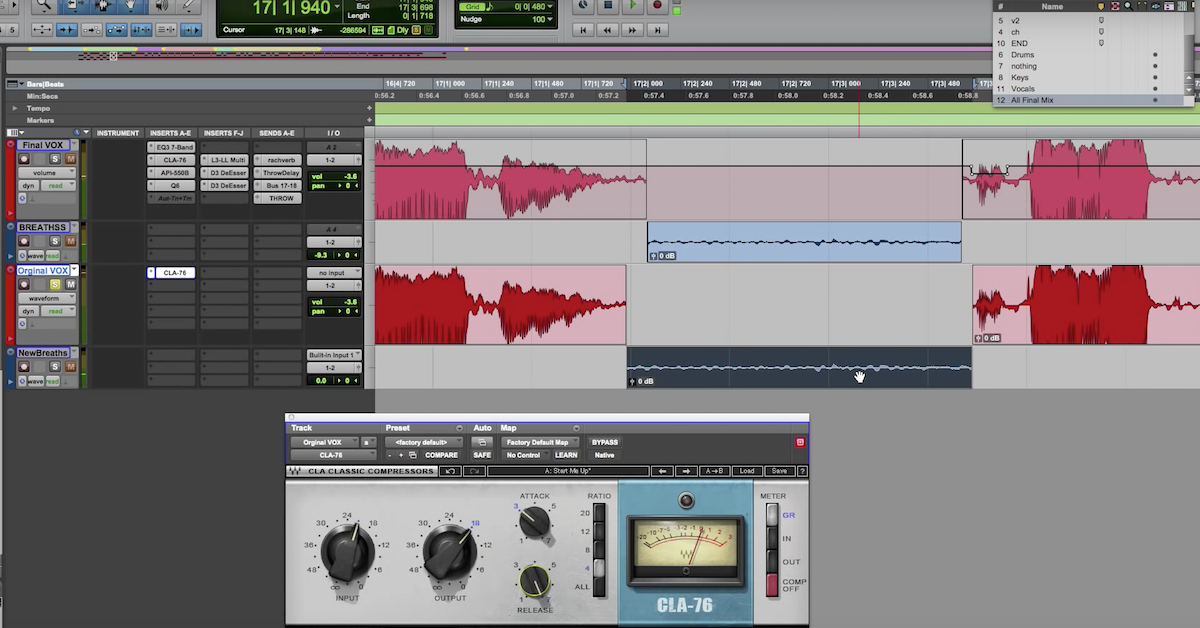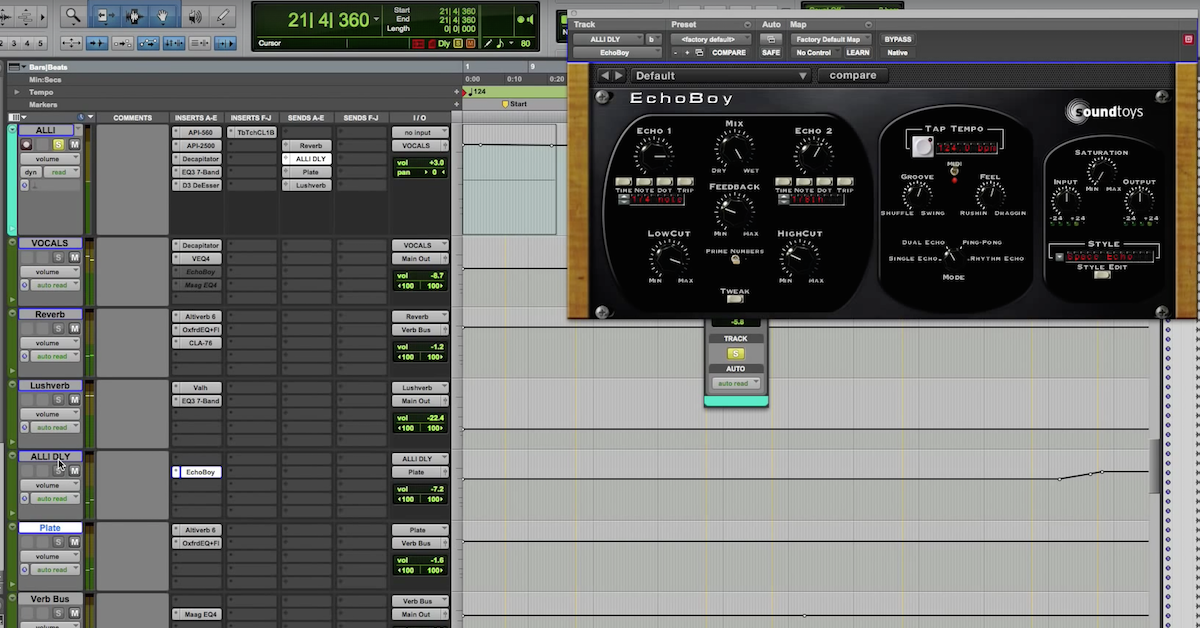How to Get a Smooth Lead Vocal Sound
I’m going to be using the song, “The Stone” by the band Goose and Fox. Please allow me to preface with the fact that this song is really well written. The lead singer has a beautiful voice. It was recorded in a great studio with great microphones and equipment, by really great engineers. As a mix engineer, that will make your life a lot easier. Sometimes as mix engineers, we receive things that were recorded in a bedroom. Maybe the lead singer shouldn’t be a lead singer. Poor microphone technique. Could be anything. But in this case, every link in the chain was really good. And that helped me a lot.
Regardless, we have a pretty dense arrangement. A lot of tracks, you can see. It took a good amount of work to get the vocal to sit right. I’ll show you how we did that.
So, I’m going to play the final mix with all of my effects on the lead vocal right here, engaged.
[music]
Let’s fast forward to a more dynamic part of the vocal performance.
[music]
All right. So, let’s mute that and any effects on that vocal, and play the raw vocal in context. You’re going to hear, especially at the louder parts of the performance, it’s a little bit harsh, and it doesn’t sit quite right.
[music]
So, I started with compression. I don’t always start with compression on the lead vocal. There are different schools of thought, but in this particular case, since the lead vocal was a little bit harsh and needed some taming, I used the CLA-2A. As you can see, we’ve got a good amount of compression here.
[music]
So, there’s compression throughout, but especially on the latter parts of the performance. After that, I used the EQ-3, which I think is really great for subtractive EQ. Works really well because it allows you, if you hold down Shift+Control to solo a band. That allows you to find unmusical and unwanted frequencies really quickly. Let me show you how I work. Some engineers will say, “Never solo anything.” I’m not one of those engineers.
[music]
So, 425.
[music]
851. That’s a pretty harsh frequency.
[music]
1400. And then lastly, a little bit above 5 kHz, I wasn’t liking too much. Every song is going to be different, but this plugin helps a lot and of course, get rid of… Most of the time, you’re going to want to get rid of these sub-y low frequencies that don’t add much.
After that, this wonderful plugin, called The Decapitator, I use for distortion. Not distortion in the way that you would think, but more to just help it sit in the context of the mix. You can get pretty crazy with this plugin if you turn up the wetness.
[music]
In this instance, I did not want that.
[music]
So, it’s mostly the dry signal, but it helps pull forward the vocal a little bit and lets it sit better. After that, this API compressor is really great. I’ve got a pretty fast attack and relatively slow release. It’s just a general compression throughout, about 3 dB.
[music]
A little bit more on the louder parts. After that, to add some air, I always use, not always, but most of the time, the API 560, because I find that the 16 kHz is excellent. Let’s take a listen.
[music]
So, don’t go overboard with this plugin, but I find cutting a little bit of mids and adding some 16 kHz really helps with air.
After that, because I have so much compression and EQ and stuff going on, I find that de-S-ing is really important. I like this de-esser right here. Sometimes, I also manually de-S by bringing down the volume automation. But in this case, just this regular de-esser with a range of -1.4 dB.
[music]
So, once again, let’s go back a little bit and find how the vocal sounds raw.
[music]
Then after all of these effects.
[music]
Now, these effects that I’ve used, I will never use the same signal chain twice. Probably, you can go through every session I’ve ever worked on, and you’re not going to see these exact settings right here and these particular effects in this order. It’s all about the song and finding what the lead vocal needs to get the story across. In this case, it just ended up being these particular plugins.
If you have any questions, make sure to email me at ianvargo[at]gmail.com. Once again, this is Ian Vargo, with theproaudiofiles.com. Make sure to check out Goose and Fox on iTunes and Soundcloud.






